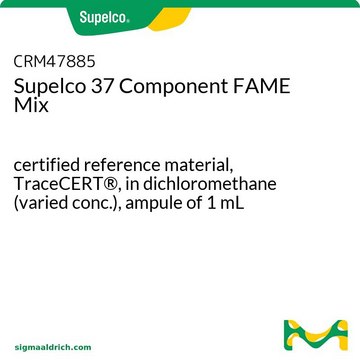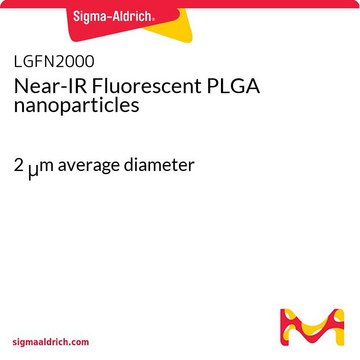LGFN10K
Near-IR Fluorescent PLGA nanoparticles
10 μm average diameter
Select a Size
About This Item
Recommended Products
description
Excitation/Emission: 780/820 nm
Excitation/Emission: 460/500 nm
form
pellets
average diameter
10 μm
storage temp.
-10 to -25°C
Looking for similar products? Visit Product Comparison Guide
Related Categories
1 of 4
This Item | LGFN5000 | LGFN2000 | LGFN200 |
|---|---|---|---|
| form pellets | form pellets | form pellets | form pellets |
| description Excitation/Emission: 780/820 nm | description Excitation/Emission: 780/820 nm | description Excitation/Emission: 780/820 nm | description Excitation/Emission: 780/820 nm |
| average diameter 10 μm | average diameter 5 μm | average diameter 2 μm | average diameter 200 nm |
| storage temp. -10 to -25°C | storage temp. -10 to -25°C | storage temp. -10 to -25°C | storage temp. -10 to -25°C |
General description
- Warm to ambient temperature
- Add DI water or buffer to achieve desired concentration
- Vortex and sonicate for 5 minutes to ensure particles are well suspended
Application
Legal Information
Storage Class Code
11 - Combustible Solids
WGK
WGK 3
Flash Point(F)
Not applicable
Flash Point(C)
Not applicable
Choose from one of the most recent versions:
Certificates of Analysis (COA)
It looks like we've run into a problem, but you can still download Certificates of Analysis from our Documents section.
If you need assistance, please contact Customer Support
Already Own This Product?
Find documentation for the products that you have recently purchased in the Document Library.
Customers Also Viewed
Our team of scientists has experience in all areas of research including Life Science, Material Science, Chemical Synthesis, Chromatography, Analytical and many others.
Contact Technical Service










